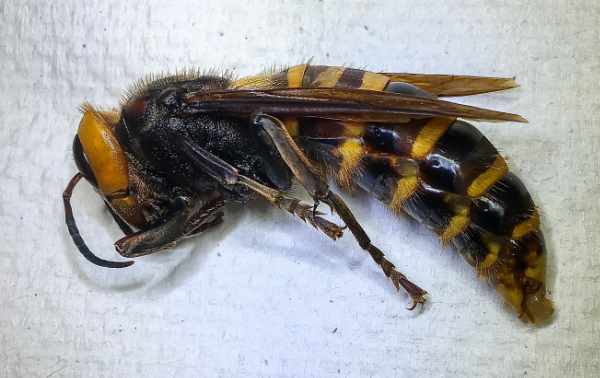Asian giant hornets are the largest species of hornet around. Sometimes called the ‘Murder Hornet’, they primarily live in South Korea, Japan, and Taiwan, among other Asian countries. But recently they were found in the US. Should you be concerned?

Asian Giant Hornets and Your Home
These hornets are aggressive hunters. They will hunt other hornet species, giant beetles, and mantises, which are all between medium and large. According to pest control experts, they are primarily known for eating honey bees, and they can quickly wipe out local populations when they do.
Since we’re all concerned about the safety of our loved ones in and around our homes, here are six things to know about them and how you should respond.
1. Do They Attack People and Pets?
Asian giant hornets don’t usually attack people or pets on their own, but they can and will if they feel threatened. They can also sting more than once. Their stingers are more dangerous and longer than most other stinging insects. It can puncture a beekeeper’s suit and contains neurotoxins.
2. What Do They Look Like?
Most Asian giant hornets are between 3 and 5 cm long, but the queens can be longer. Their stinger is about 0.5 cm long, and their wingspan is 7.5 cm. This species has a big, orange-yellow head with big eyes and sharp jaws. This is probably what makes it stand out the most. They also have dark brown and yellow stripes on their stomachs. People may mistake them for bald-faced or European hornets because of their appearance.
3. Where Do They Live?
Since Asian giant hornets usually live underground, finding or seeing their nests can be hard. This species digs holes in the ground to make nests or moves into tunnels that other animals, such as rodents, have already made. These hornets will also look for places near tree roots that have started to rot.
4. Why Are They Called Murder Hornets?
In some news stories and social media posts, Asian giant hornets have been called “murder hornets.” Even though this species is known to kill up to 50 people yearly in Japan, their strange name comes from how they attack and kill honey bees, not people. Asian giant hornets can attack honey bee hives and destroy them all in just a few hours.
When these hornets find a honey bee nest, they use their sharp jaws to cut off the bees’ heads and kill them. During the “slaughter phase,” these hornets can kill up to 40 honey bees per minute. This means that a few hornets can kill an entire honey bee colony in as little as 90 minutes.
Honey bees may fight back by stinging their attackers, but Asian giant hornets are much bigger and have armor. After a honey bee colony has been destroyed, the hornets will eat the larvae and pupae and feed them to their own young. If these hornets move into an area, they can greatly affect the honey bees that live there.
5. What Do I Do If I Get Stung?
Take out the stinger as rapidly as possible to reduce the quantity of poison discharged. After washing the afflicted region with soap and running cold water, apply cold compresses to reduce the localized swelling. If you or someone else exhibits signs of an allergic reaction, including swelling of the throat or tongue, dizziness, or shortness of breath, immediately dial 911 for emergency medical help.
6. What to Do If You Discover a Nest?
It is not a “do it yourself” job to remove a nest of stinging insects from your home. If you try to remove a nest, the pests may become agitated and feel threatened, possibly leading to an attack involving many of them.
If you find a nest on your property, you should seek assistance from a qualified exterminator as soon as possible. Licensed pest control experts have access to the tools and knowledge necessary to eliminate an infestation in a way that is both successful and safe.


